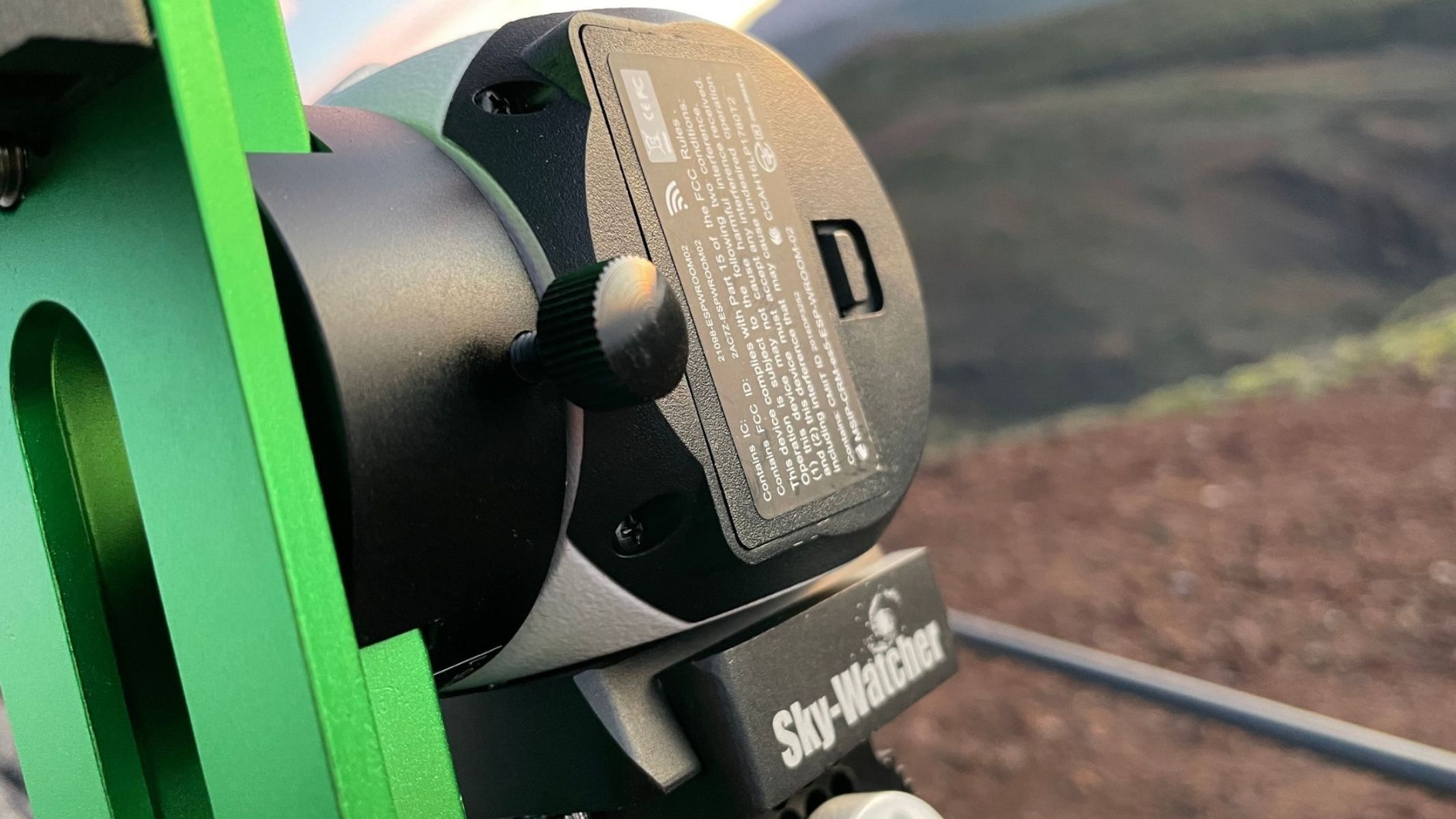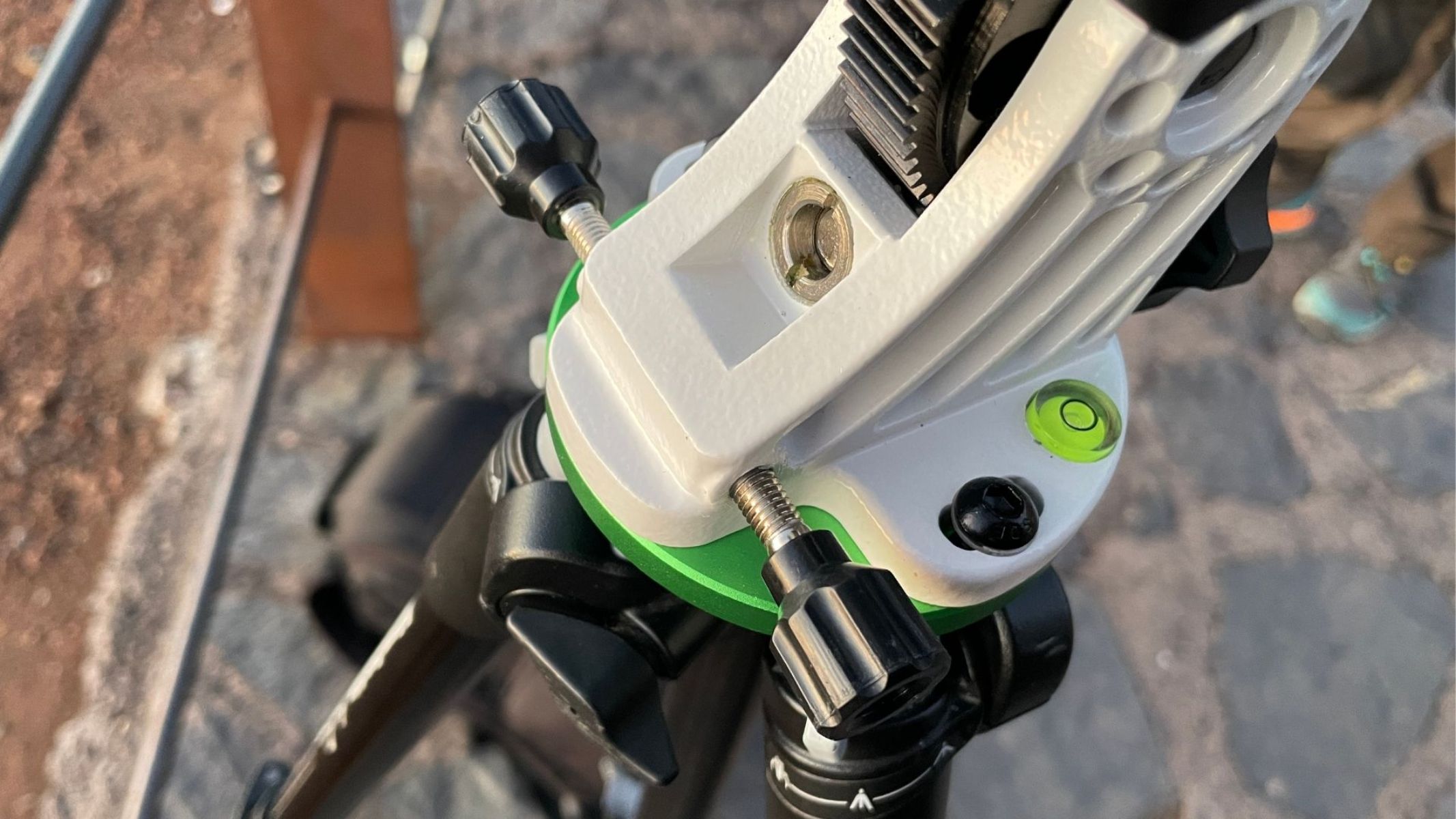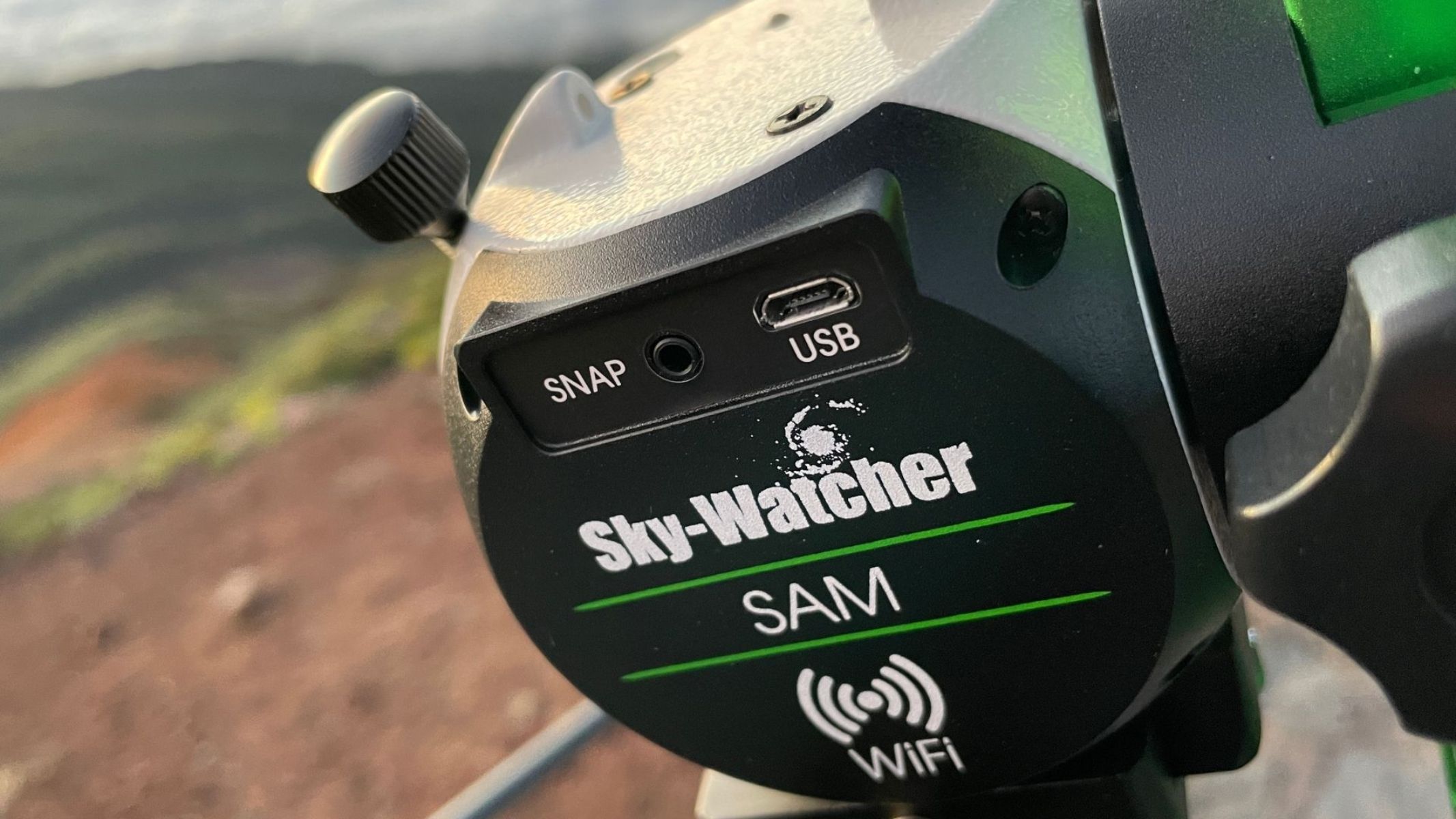Space Verdict
If you want to take better images of the Milky Way when you travel to seek dark skies then the Sky-Watcher Star Adventurer mini is one of the best star trackers around.
Pros
- +
Precise four-minute tracking
- +
Lightweight design
- +
3KG payload
Cons
- -
No laser pen supplied
- -
Polar alignment can be fiddly
- -
Smartphone app crashes
Why you can trust Space.com
You can take a long exposure image of the night sky with any manual camera, but only a motorised star tracker like the Sky-Watcher Star Adventurer Mini (SAM) will allow you to expose for longer than 30 seconds before the stars begin to trail and blur.
Weight: 650g (mount only)
Dimensions: 76x70x103mm (mount only)
Max. lens focal length: 100mm
Max. payload: 3KG
Power: 2x AA batteries or external portable battery
Tripod thread: 3/8-inch and 1/4 inch
Alignment method: Polar scope
That’s because Earth’s moving at 1,000 mph, something the SAM accounts for because it aligns with Polaris, the north star, and effectively cancels-out trailing stars. The end result is better images of the night sky that contain more stars, more nebulae — and a lot more Milky Way.
Such trackers have existed for a few years, but most are either bulky or lack accuracy. The SAM is a good balance between portability and precision, but how does it perform out in the field?
Sky-Watcher Star Adventurer mini: Design

- Shipped with comprehensive accessory bundle
- Takes up to 100mm lenses
- Polar alignment design is fiddly
The ‘Pro Pack’ we reviewed consisted of six components; the motorised mount unit, an equatorial wedge for precision aligning with Polaris, a ball head adapter, a polar scope that helps you put Polaris in its crosshairs, and a small plastic polar scope illuminator to make that job easier. This pack also includes a dovetail L-bracket (for using with a counterweight, available separately). Despite its comprehensive accessories you do have to provide a ball-head for your camera.

We were able to get it all in a fairly small camera backpack alongside a DSLR camera that also took a 24-105mm lens and an ultra-wide angle 14mm lens (both of which we used successfully with the SAM).
Polar alignment is time-consuming even if you can find Polaris, the North Star. The trick is to first know exactly where it is in the night sky, but also to get it in the crosshairs of the polar scope’s sights. There’s a small red laser light to help you, but in practice that merely blocks your view of Polaris. We were able to find Polaris by looking through the main Polarscope tunnel, roughly aligning the Star Adventurer before making a fine adjustment using the polar scope (the app has a Polar Clock Utility page to help you get it spot-on). However, by far the easiest way to make an initial rough alignment is to get someone else to point at Polaris using a green or red astronomy laser pointer (if they’re legal in your country).
Sky-Watcher Star Adventurer mini: Performance

- Good, reliable tracking once set up
- SA Console app could use some work
- Better to run off external battery bank than AA batteries
In our test we managed to set it up, align it properly with Polaris, and take a series of one, two and three-minute test shots – to check it was aligned – in about 25 minutes. Each time it succeeded, though you then have to be insanely careful not to touch your tripod.
Breaking space news, the latest updates on rocket launches, skywatching events and more!
The SAM performs admirably, creating pin-sharp stars and rich star fields during tracks of up to about four minutes. We had almost exactly 3kg on the SAM, so it was operating at its limit. However, if you’re thinking of buying the SAM then don’t just think about the weight of your camera body and the lenses you intend to use. You also have to factor in the weight of your ball head.

After connecting your smartphone to a Wi-Fi network produced by the SAM it’s necessary to use the SA Console app to get the SAM to track. That’s a shame because the app is bad. Not once during four nights of testing was the SAM still connected to the app by the time we had finished a batch of long exposures, nor the app still working properly. To stop the SAM from tracking once we were ready to take long exposures of the foreground we always had to force-quit the app and resort to switching the SAM on and off again to reset it.

You can still do what you need to do, but no app for a device this pricey should be crashing every time it’s used. It’s so bad that if Sky-Watcher doesn’t quickly improve its app we can see the Star Adventurer Mini quickly being supplanted by rival star trackers coming down the line (such as the long-awaited and much-delayed Benro Polaris).
The SAM runs off a couple of AA batteries, which ran out of power after three nights of extended use; instead we ran it off a portable battery via micro USB.

Should you buy the Sky-Watcher Star Adventurer Mini star tracker?
If you want to take better images of the Milky Way when you travel to seek dark skies then, yes, the SAM is one of the best star trackers around.
It’s easy to use and one of the most accurate, most versatile and best value star trackers on the market. However, it’s got one major weakness – its poor app. If Sky-Adventurer can vastly improve the reliability of the app and freshen-up its dated user experience then the SAM can remain as one of the best star trackers around.
If this product isn’t for you
If you have heavier gear or want to use longer lenses then opt for the larger Sky-Watcher Sky-Watcher Star Adventurer 2i, which has a built-in polar scope, and can take payloads up to 5KG and 400mm lenses. However, it uses the same poor SA Console app.
The priciest and probably the best star tracker available at present is the iOptron SkyGuider Pro, which can also take 5kg of gear and maxes out with 400mm lenses. It’s also got its own polar scope built-in.
A smaller, more nimble option than the SAM is the Move Shoot Move, a star tracker for 50mm lenses that requires only on a rough alignment with Polaris using a green laser pointer. However, it can reliably track for a shorter time — about two or three minutes.

Jamie is an experienced science, technology and travel journalist and stargazer who writes about exploring the night sky, solar and lunar eclipses, moon-gazing, astro-travel, astronomy and space exploration. He is the editor of WhenIsTheNextEclipse.com and author of A Stargazing Program For Beginners, and is a senior contributor at Forbes. His special skill is turning tech-babble into plain English.

